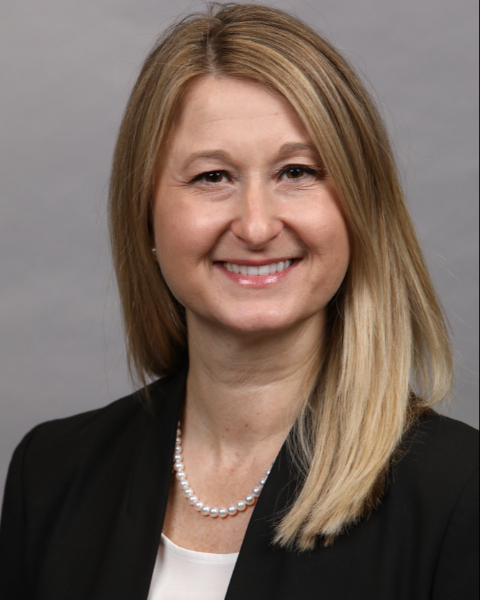PQA 02 - PQA 02 Physics Poster Q&A
2449 - Radiation-Induced Cardiac Toxicity Risk Stratification Using Deep Learning-Based Dose Prediction
Sunday, September 29, 2024
4:45 PM - 6:00 PM ET
Location: Hall C
Screen: 33

Carri Glide-Hurst, PhD
University of Wisconsin Madison
Madison, WI, United States
Presenter(s)
Y. Yan, R. A. B. Bayliss, A. M. Baschnagel, N. Summerfield, and C. Glide-Hurst; Department of Human Oncology, University of Wisconsin-Madison, Madison, WI
Purpose/Objective(s): Radiation-induced cardiac toxicity (RICT) is a side effect of thoracic cancer radiation therapy that compromises prognosis and overall survival. Identifying patients who may be at higher risk for cardiovascular complications based on their disease burden and resulting radiation treatment plans remains an unmet need to aid in guiding cardio-oncology interventions. We present a novel AI dose prediction pipeline for future implementation in patient stratification. Materials/
Methods: Thirty-three clinically approved 2-4-arc volumetric modulated arc therapy plans for patients with non-small cell lung cancer treated to 60-66 Gy were curated. A 3D conditional generative adversarial network consisting of a 7-level 3D U-net generator and a PatchGAN discriminator was trained using five-fold cross validation. Model inputs included 7-channels: respiration-averaged treatment planning CTs and binary masks of clinical contours including planning target volume (PTV), heart, lungs, esophagus and cord, for dose prediction. Learning rate scheduling was employed to prevent overfitting. To evaluate model performance, dose-volume histogram metrics including PTV D95, whole heart Dmean and V25 were compared between clinical and predicted dose with Wilcoxon sign-rank significance test. To test feasibility of using predicted dose for risk stratification, the whole heart V25 >14% as a surrogate for high cardiotoxicity risk based on reported literature was evaluated. Sensitivity and specificity of predicted dose stratification were then benchmarked against clinical dose stratification to assess model performance.
Results: Absolute error (AE) of PTV D95 between clinical and predicted dose was 1.9±2.0 Gy (~3% prescription dose) across the cohort. Overall target coverage was similar in the predicted plans although some outliers existed leading to high standard deviation and significant statistical differences. No statistically significant differences were observed in the whole heart Dmean and V25 (AE=2.5±2.4Gy and 4.9±7.1%, respectively) between clinical and predicted plans. Applying the whole heart V25 >14% threshold, clinical dose suggested 15 patients would be classified as high risk for RICT. AE of whole heart V25 was 8.7±9.0% for cases classified as high risk as compared to 1.8±2.0% in the remaining population. Nevertheless, stratification was well matched between predicted and clinical doses.
Conclusion: We have trained an AI model for dose prediction with our preliminary results highlighting the potential for RICT risk stratification using whole-heart metrics. Next steps include integrating cardiac substructures and attaching a fully automated segmentation pipeline for rapid prospective stratification of patients at high risk for RICT, signaling the need for cardio-oncology interventions such as cardiac-spared treatment planning.
Purpose/Objective(s): Radiation-induced cardiac toxicity (RICT) is a side effect of thoracic cancer radiation therapy that compromises prognosis and overall survival. Identifying patients who may be at higher risk for cardiovascular complications based on their disease burden and resulting radiation treatment plans remains an unmet need to aid in guiding cardio-oncology interventions. We present a novel AI dose prediction pipeline for future implementation in patient stratification. Materials/
Methods: Thirty-three clinically approved 2-4-arc volumetric modulated arc therapy plans for patients with non-small cell lung cancer treated to 60-66 Gy were curated. A 3D conditional generative adversarial network consisting of a 7-level 3D U-net generator and a PatchGAN discriminator was trained using five-fold cross validation. Model inputs included 7-channels: respiration-averaged treatment planning CTs and binary masks of clinical contours including planning target volume (PTV), heart, lungs, esophagus and cord, for dose prediction. Learning rate scheduling was employed to prevent overfitting. To evaluate model performance, dose-volume histogram metrics including PTV D95, whole heart Dmean and V25 were compared between clinical and predicted dose with Wilcoxon sign-rank significance test. To test feasibility of using predicted dose for risk stratification, the whole heart V25 >14% as a surrogate for high cardiotoxicity risk based on reported literature was evaluated. Sensitivity and specificity of predicted dose stratification were then benchmarked against clinical dose stratification to assess model performance.
Results: Absolute error (AE) of PTV D95 between clinical and predicted dose was 1.9±2.0 Gy (~3% prescription dose) across the cohort. Overall target coverage was similar in the predicted plans although some outliers existed leading to high standard deviation and significant statistical differences. No statistically significant differences were observed in the whole heart Dmean and V25 (AE=2.5±2.4Gy and 4.9±7.1%, respectively) between clinical and predicted plans. Applying the whole heart V25 >14% threshold, clinical dose suggested 15 patients would be classified as high risk for RICT. AE of whole heart V25 was 8.7±9.0% for cases classified as high risk as compared to 1.8±2.0% in the remaining population. Nevertheless, stratification was well matched between predicted and clinical doses.
Conclusion: We have trained an AI model for dose prediction with our preliminary results highlighting the potential for RICT risk stratification using whole-heart metrics. Next steps include integrating cardiac substructures and attaching a fully automated segmentation pipeline for rapid prospective stratification of patients at high risk for RICT, signaling the need for cardio-oncology interventions such as cardiac-spared treatment planning.
